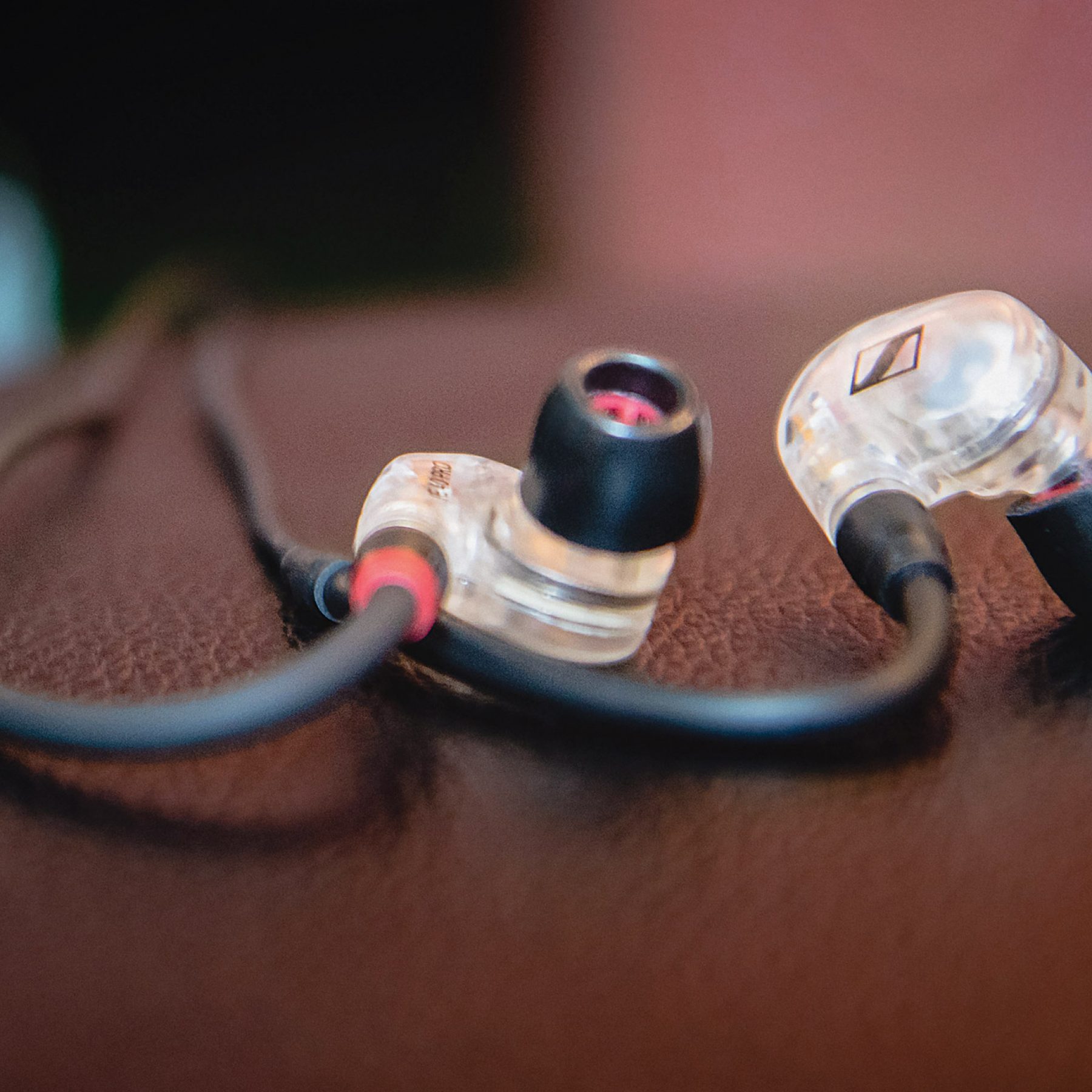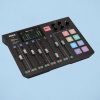
Review: Sennheiser IE 40 Pro
Sennheiser’s new line of in-ears rely on a single dynamic driver to rule all the balanced armature designs. But is just one enough?
The IEM market is becoming as saturated as a sturgeon tank in a caviar farm [huh? —Ed.]. It’s teeming with generic models pitched at teenage commuters, audiophiles, touring musicians and everyone in between. Interestingly, Sennheiser has appealed directly to stage musicians with its IE 40 Pros. For those already jamming with ears, does this single dynamic driver design improve on the stalwart balanced armature heavyweights?
SENN-DING THE RIGHT MESSAGE
At first impression, these in-ears tick all the boxes for a pair of stage monitors. Detachable cables? Tick. Flexible ear loop? Tick. The medium size tips fit me perfectly from the get-go, not even budging during a quick jog. I can’t say the same for my weightier Shure in-ears which would wiggle out over time. The time since I purchased them in 2010 has allowed Sennheiser to shave down the size of its in-ears considerably, and the cable is also far lighter. One caveat that must be tabled within these preliminary assessments comes as a product of Sennheiser’s laser-like focus on stage use: the omission of a stepped 3.5mm connector will inevitably force phone users to de-case should they want to plug in.
These are, subjectively, a great pair of listening IEMs. I’m a Shure se315 owner and have listened and performed with a range of balanced-armature single and double driver IEMs. While these lack the forward mids of other multi-driver configurations, they don’t miss out on clarity. The low end is big and detailed, with those quite large 10mm dynamic drivers pushing much more air than any other IEMs I’ve heard, especially at this price.
Headphones and in-ears can often be too ‘scooped’ for me, but these tread that fine line nicely. The bass response is big but never overbearing, and is necessary for vibe onstage. The instrument separation is nice, as is the sound stage; wider than my Shures, and often clearer in busier mixes.
The dynamic driver approach makes the sound source seem physically further from my ear drum, which I find pleasant over the feeling of having sound injected into your ear drums.
ZING, YOU GOT ME
The sound has one blemish though: quite zingy highs. After listening to the IE 40 Pros on multiple occasions, separated by time and listening on monitors and my Shures, they still continue to surprise me when I pop them back in. Hi-hats and cymbals can be especially penetrating and there were times when performing high-impact synth patches I found the HF response uncomfortable.
Unfortunately, despite the IE 40 Pro’s great fit, and deftness for staying wedged in, their isolation isn’t as robust as other generic IEMs. During my on-stage tests they didn’t do as much as I’d like to protect me from the full force of the bass cab and drums on the other side of stage. On later dates, I performed bass guitar with lots of drum and subwoofer leakage muddy-ing my IEM foldback mix. Upon reflection, the ear tips on the IE 40 Pros are comparatively shallow — which cuts down on weight and can improve comfort, but I wasn’t able to be insert them as far as I needed to get the isolation I desired on a loud stage.
FIT FOR PURPOSE
If you’re a muso looking to upgrade your rig with IEMs, this pair are a great place to start, offering many advantages over offerings at similar (or even higher) price points. Everything else apart from the highs and iso-fit is best in class. They would also be a great choice for houses of worship, theatres or education facilities looking to invest in a complement of sets. The IE 40 Pros are priced well, comfortable, if upgrading to an ears system for foldback, especially if you’ve already tamed your stage sound.
























RESPONSES